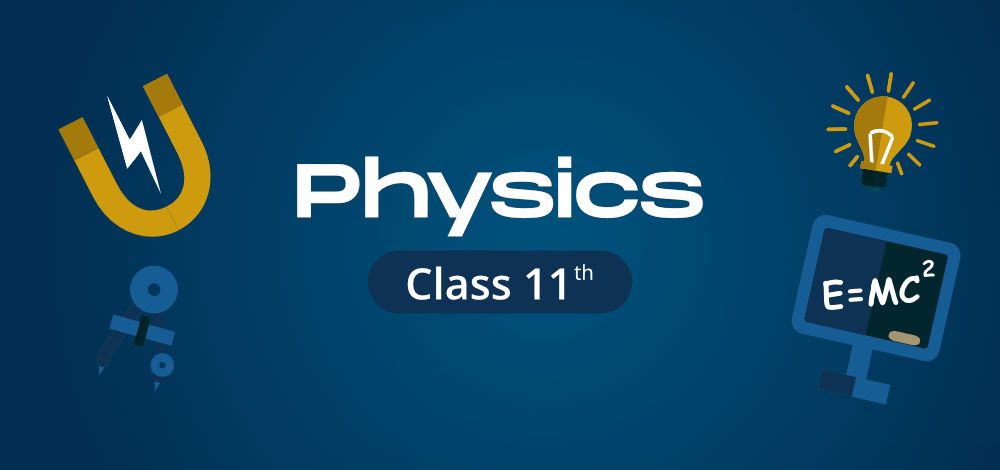Mechanical Properties of Solids investigates how solid materials respond to applied forces through the concept of elastic and plastic deformation. Students explore stress, strain, and Young’s modulus to understand material behavior under tension, compression, and shear forces. This chapter connects microscopic atomic arrangements to macroscopic material properties, helping students understand engineering applications from building design to material selection in manufacturing.
Plus One Physics Notes – Chapter 9: Mechanical Properties of Solids
SCERT Kerala Board
Elastic Behavior of Solids
Elasticity:
- The property of a material to regain its original shape and size after the deforming forces are removed
- Elastic limit: Maximum stress beyond which a body loses its elastic behavior
Plasticity:
- The property of a material to retain its deformation permanently after the deforming force is removed
Stress and Strain
Stress:
- The internal restoring force per unit area developed due to external forces
- Formula: Stress = Force/Area
- SI unit: N/m² or Pascal (Pa)
Types of Stress:
- Tensile Stress: When a body is subjected to two equal and opposite forces pulling it outwards
- Compressive Stress: When a body is subjected to two equal and opposite forces pushing it inwards
- Shearing Stress: When a body is subjected to two equal and opposite forces acting tangentially
Strain:
- The ratio of change in dimension to the original dimension
- It is a dimensionless quantity (no units)
Types of Strain:
- Longitudinal Strain: Change in length/Original length
- Volumetric Strain: Change in volume/Original volume
- Shearing Strain: Tangent of the angle of shear
Hooke’s Law
Statement: Within the elastic limit, stress is directly proportional to strain.
Mathematical Form: Stress ∝ Strain or Stress = E × Strain
- E = Modulus of Elasticity (or Young’s Modulus)
Significance:
- Linear relationship between stress and strain within elastic limit
- Stress-strain curve shows this relationship graphically
Elastic Moduli
- Young’s Modulus (Y):
- Ratio of longitudinal stress to longitudinal strain
- Y = (F/A)/(ΔL/L) = (F×L)/(A×ΔL)
- SI unit: N/m² or Pascal (Pa)
- Describes resistance to elongation or compression
- Bulk Modulus (K):
- Ratio of volumetric stress to volumetric strain
- K = (ΔP)/(ΔV/V) = -(V×ΔP)/ΔV
- Negative sign indicates that volume decreases with increase in pressure
- Describes resistance to uniform compression
- Modulus of Rigidity (G):
- Ratio of shearing stress to shearing strain
- G = (F/A)/θ
- Describes resistance to shearing deformation
Poisson’s Ratio
Definition:
- Ratio of lateral strain to longitudinal strain
- μ = -(Lateral strain)/(Longitudinal strain)
- Negative sign indicates that when a body is stretched, its width decreases
Value range:
- Theoretical range: -1 to 0.5
- For most materials: 0 to 0.5
- Cork: μ ≈ 0
- Rubber: μ ≈ 0.5
- Most metals: μ ≈ 0.3
Elastic Energy and Elastic Potential Energy
Elastic Potential Energy:
- Energy stored in an elastic body when deformed
- For stretching: U = (1/2) × Force × Extension = (1/2) × F × ΔL
- Alternatively: U = (1/2) × Stress × Strain × Volume
Behavior Beyond Elastic Limit
Plastic Deformation:
- Permanent deformation that remains after removing stress
Important points on stress-strain curve:
- Proportional limit: Maximum stress for which Hooke’s law is valid
- Elastic limit: Maximum stress beyond which plasticity begins
- Yield point: Point where strain increases without significant increase in stress
- Breaking point: Point where the material fractures
Factors Affecting Elasticity
- Temperature: Generally, elasticity decreases with increase in temperature
- Impurities: Addition of impurities usually changes elastic properties
- Hammering and Rolling: Usually increases elasticity
- Annealing: Process of heating and slow cooling that decreases elasticity
Applications of Elastic Behavior
- Design of buildings, bridges, and other structures
- Design of springs and shock absorbers
- Manufacturing of elastic materials like rubber bands
- Understanding seismic waves and Earth’s interior
Practice Problems
- A wire of length 2 m and a cross-sectional area 0.01 cm² is stretched by a force of 20 N. If the Young’s modulus of the material is 2 × 10¹¹ N/m², calculate the increase in length.
- A spherical ball of radius 10 cm is subjected to a uniform pressure of 10⁵ Pa. If the bulk modulus of the material is 2 × 10¹⁰ Pa, find the decrease in volume.
- A copper rod of length 50 cm and diameter 0.2 cm is stretched by a force of 10 N. Calculate the strain energy stored in the rod. (Young’s modulus of copper = 1.1 × 10¹¹ N/m²)
These notes cover the essential concepts of Mechanical Properties of Solids for Plus One Physics following the SCERT Kerala Board syllabus, presented in a simplified manner for easier understanding.
Complete Chapter-wise Hsslive Plus One Physics Notes
Our Hsslive Plus One physics notes cover all chapters with key focus areas to help you organize your study effectively:
- 1. Physical World Notes
- 2. Units and Measurements Notes
- 3. Motion in a Straight Line Notes
- 4. Motion in a Plane Notes
- 5. Laws of Motion Notes
- 6. Work, Energy and Power Notes
- 7. System of Particles and Rotational Motion Notes
- 8. Gravitation Notes
- 9. Mechanical Properties of Solids Notes
- 10. Mechanical Properties of Fluids Notes
- 11. Thermal Properties of Matter Notes
- 12. Thermodynamics Notes
- 13. Kinetic Theory Notes
- 14. Oscillations Notes
- 15. Waves Notes
